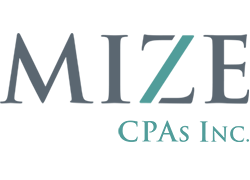
Tax-Favored Retirement Plan Options for Your Organization
When you hear “retirement plan”, many of us think immediately of 401(k) plans, and rightfully so. Since their establishment in the late 1970s, 401(k)s have been offered by companies of all sizes and offer valuable tax benefits for both employers and employees. But they also come with administrative costs that may not work as well for smaller organizations. Here are two other tax-favored retirement plan options to consider:
SEP-IRA
Self-employed individuals can contribute up to 20% of self-employment earnings with a maximum contribution of $61,000 (this is the 2022 limit, which is adjusted for inflation each year).
If you’re employed by your own corporation, you can contribute up to 25% of your earnings, with the same $61,000 annual limit.
SIMPLE Plans
Organizations with up to 100 employees can set up a SIMPLE plan. In many ways, a SIMPLE plan is just like a 401(k) plan, only simpler (hence the name!) and cheaper to administer. Rather than requiring a multiple-page legal plan document to establish the plan, an annual Form 5500 filing, and nondiscrimination testing, a SIMPLE plan can be set up by completing the two pages of Form 5304-SIMPLE or 5305-SIMPLE, with your financial institution handling most of the details.
For that convenience however, there are a couple of caveats. Employee contributions in a SIMPLE plan are lower than what’s allowed in a 401(k) plan. For 2022, SIMPLE contributions are limited to $14,000 rather than the $20,500 maximum for a 401(k). And SIMPLE plans require the employer to make a contribution to each eligible employee’s account, either 2% of each employee’s compensation or following a specific matching formula.
A SIMPLE plan must be offered to any employees who earned at least $5,000 in any prior 2 years and are reasonably expected to earn at least $5,000 in the current year. By contrast, eligible employees in a 401(k) plan can be limited to those who have attained age 21 and one year of service with your organization in which they worked 1000 hours.
Retirement Plan Tax Benefits
Qualified retirement plans such as the two options above as well as 401(k) plans provide significant tax advantages for both companies and employees.
- Contributions made by the employer (such as profit sharing or matching contributions) are tax-deductible as business expenses.
- Employee retirement plan accounts grow tax free until distributed.
- Employee salary deferrals can reduce the employee’s income if made on a pre-tax basis.
- Some plans allow employees to make Roth contributions which are made on an after-tax basis but allow investment growth to be withdrawn tax free. Distributions upon death, disability, or after age 59 ½ from Roth accounts held for 5 years, including earnings, are generally tax free.
- Distributions from a qualified retirement plan can generally be rolled into another company’s retirement plan or into the employee’s personal IRA, allowing accounts to be maintained on a tax-favored basis until the employee attains retirement age.
Deadlines for Establishing and Contributing to a Retirement Plan
Employer contributions must be made to the plan by the due date of the company’s tax return, including any extensions.
SIMPLE-IRA plans must be established by October 1 of the year in which the plan takes effect.
A 401(k) plan must be in place before employee salary deferrals can be made, which means it’s too late to set up a plan for 2021 but there’s still time to set up a plan for 2022.
Questions?
Contact your Mize relationship manager for more information on retirement plan options for your organization.



